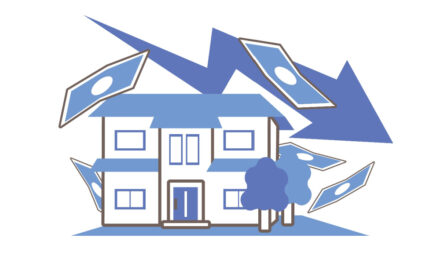When you need to borrow money, two of the most common options are personal loans and credit cards. While both give you access to funds, they serve different purposes and come with distinct advantages and drawbacks. Understanding how each works can help you choose the option that best fits your financial goals and circumstances.
What Is a Personal Loan?
A personal loan is an unsecured installment loan issued by a bank, credit union, or online lender. Here’s how it works:
- Lump-sum disbursement. You receive a one-time infusion of cash.
- Fixed interest rate. Your rate—and therefore your monthly payment—remains constant for the life of the loan.
- Set repayment term. You’ll pay back the loan in equal installments over a predefined period (e.g., 36 or 60 months).
- No collateral required. Because it’s unsecured, you don’t have to pledge assets like a home or car.
Ideal Uses for Personal Loans
- Large, planned expenses: Home renovations, weddings, or medical bills.
- Debt consolidation: Roll multiple high-interest debts into a single, more manageable payment.
- Predictable budgeting: Know exactly what you owe each month and when you’ll be debt-free.
What Is a Credit Card?
A credit card offers a revolving line of credit that you can use repeatedly, up to a preset limit. Key features include:
- Revolving balance. Borrow as needed, pay it down, and borrow again.
- Variable APR. Interest rates can fluctuate with market conditions.
- Minimum payments. You must pay at least a small percentage of your balance each billing cycle—but carrying a balance incurs interest.
- Rewards programs. Many cards offer cash back, points, or travel miles on purchases.
Ideal Uses for Credit Cards
- Everyday spending: Groceries, gas, and routine bills.
- Short-term financing: Covering an unexpected expense until you can pay it off.
- Reward earning: Maximize cash back or travel perks on regular purchases.
Head-to-Head Comparison
| Feature | Personal Loans | Credit Cards |
|---|---|---|
| Interest Rate | Fixed and often lower | Variable and typically higher |
| Payment Structure | Set monthly installments | Minimum payment required; balance can fluctuate |
| Flexibility | One-time lump sum | Ongoing access to credit |
| Access Speed | Several days for approval and funding | Instant digital approval in many cases |
| Rewards & Perks | Generally none | Cashback, points, travel benefits |
Interest Rates & Cost
Personal loans usually offer lower, fixed rates, which makes budgeting easy and helps you pay down debt faster. Credit cards often carry higher and variable APRs, which can lead to costly interest charges if you carry a balance.
Advantage: Personal loans
Repayment Predictability
With personal loans, you know exactly when your debt will be paid off. Credit cards can trap you in a cycle of minimum payments, stretching repayment (and interest costs) over years.
Advantage: Personal loans
Flexibility & Convenience
Credit cards win on flexibility: you can swipe for everyday purchases or emergencies without applying each time. Personal loans require a new application for additional funds.
Advantage: Credit cards
Speed of Access
Credit cards generally offer instant or near-instant approval, especially for digital accounts. Personal loans typically take several business days to process.
Advantage: Credit cards
Rewards & Perks
If earning points or cash back matters, credit cards offer a clear edge—personal loans don’t usually include rewards.
Advantage: Credit cards
Which Should You Choose?
- Choose a personal loan if:
- You need a specific, lump-sum amount for a large expense.
- You value predictable payments and a clear payoff date.
- You plan to consolidate high-interest debt.
- Choose a credit card if:
- You want ongoing access to funds for everyday or unexpected costs.
- You can pay off your balance in full each month to avoid interest.
- You aim to earn rewards on your spending.
Ultimately, the “best” choice depends on your borrowing needs, repayment habits, and financial goals. By weighing the pros and cons outlined above, you can select the option that supports your budget and keeps your borrowing costs under control.
When you need to borrow money, two of the most common options are personal loans and credit cards. While both give you access to funds, they serve different purposes and come with distinct advantages and drawbacks. Understanding how each works can help you choose the option that best fits your financial goals and circumstances.
What Is a Personal Loan?
A personal loan is an unsecured installment loan issued by a bank, credit union, or online lender. Here’s how it works:
- Lump-sum disbursement. You receive a one-time infusion of cash.
- Fixed interest rate. Your rate—and therefore your monthly payment—remains constant for the life of the loan.
- Set repayment term. You’ll pay back the loan in equal installments over a predefined period (e.g., 36 or 60 months).
- No collateral required. Because it’s unsecured, you don’t have to pledge assets like a home or car.
Ideal Uses for Personal Loans
- Large, planned expenses: Home renovations, weddings, or medical bills.
- Debt consolidation: Roll multiple high-interest debts into a single, more manageable payment.
- Predictable budgeting: Know exactly what you owe each month and when you’ll be debt-free.
What Is a Credit Card?
A credit card offers a revolving line of credit that you can use repeatedly, up to a preset limit. Key features include:
- Revolving balance. Borrow as needed, pay it down, and borrow again.
- Variable APR. Interest rates can fluctuate with market conditions.
- Minimum payments. You must pay at least a small percentage of your balance each billing cycle—but carrying a balance incurs interest.
- Rewards programs. Many cards offer cash back, points, or travel miles on purchases.
Ideal Uses for Credit Cards
- Everyday spending: Groceries, gas, and routine bills.
- Short-term financing: Covering an unexpected expense until you can pay it off.
- Reward earning: Maximize cash back or travel perks on regular purchases.
Head-to-Head Comparison
| Feature | Personal Loans | Credit Cards |
|---|---|---|
| Interest Rate | Fixed and often lower | Variable and typically higher |
| Payment Structure | Set monthly installments | Minimum payment required; balance can fluctuate |
| Flexibility | One-time lump sum | Ongoing access to credit |
| Access Speed | Several days for approval and funding | Instant digital approval in many cases |
| Rewards & Perks | Generally none | Cashback, points, travel benefits |
Interest Rates & Cost
Personal loans usually offer lower, fixed rates, which makes budgeting easy and helps you pay down debt faster. Credit cards often carry higher and variable APRs, which can lead to costly interest charges if you carry a balance.
Advantage: Personal loans
Repayment Predictability
With personal loans, you know exactly when your debt will be paid off. Credit cards can trap you in a cycle of minimum payments, stretching repayment (and interest costs) over years.
Advantage: Personal loans
Flexibility & Convenience
Credit cards win on flexibility: you can swipe for everyday purchases or emergencies without applying each time. Personal loans require a new application for additional funds.
Advantage: Credit cards
Speed of Access
Credit cards generally offer instant or near-instant approval, especially for digital accounts. Personal loans typically take several business days to process.
Advantage: Credit cards
Rewards & Perks
If earning points or cash back matters, credit cards offer a clear edge—personal loans don’t usually include rewards.
Advantage: Credit cards
Which Should You Choose?
- Choose a personal loan if:
- You need a specific, lump-sum amount for a large expense.
- You value predictable payments and a clear payoff date.
- You plan to consolidate high-interest debt.
- Choose a credit card if:
- You want ongoing access to funds for everyday or unexpected costs.
- You can pay off your balance in full each month to avoid interest.
- You aim to earn rewards on your spending.
Ultimately, the “best” choice depends on your borrowing needs, repayment habits, and financial goals. By weighing the pros and cons outlined above, you can select the option that supports your budget and keeps your borrowing costs under control.




